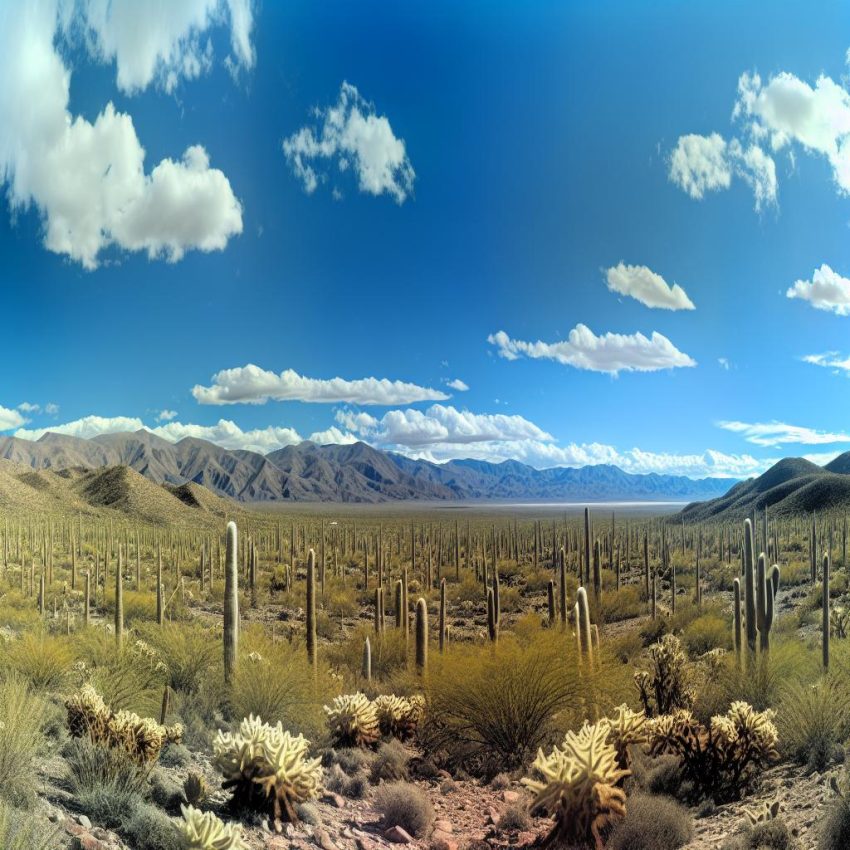Introduction
Los Cardones National Park, situated in the northwestern region of Argentina, is a sprawling sanctuary for nature enthusiasts and adventurers alike. Encompassing an area of approximately 650 square kilometers, it is located in the province of Salta. The park offers visitors a chance to explore a diverse range of flora and fauna unique to this part of the world. Its name is derived from the abundant presence of cardón cacti, which dominate the landscape and lend the park its distinctive identity.
Geography and Climate
The geography of Los Cardones National Park is as varied as it is breathtaking. The park encompasses a mix of dry valleys, rugged mountain ranges, and vast plateaus. Situated within the foothills of the Andes, the park boasts a semi-arid climate, which significantly influences the living conditions of its resident species. The temperatures here can exhibit dramatic fluctuations, with the days being characteristically hot while the nights are considerably cooler. This variation in temperature plays a vital role in shaping the unique ecosystem found within the park.
Flora and Fauna
The park’s vegetation is dominated by the iconic cardón cactus, a remarkable species that can grow up to 10 meters tall. These towering plants are a quintessential feature of the landscape, providing not only visual allure but also a vital habitat for various animal species. In addition to the cardón cacti, the park’s flora includes lush grasslands and a variety of shrub species that have adapted to the semi-arid conditions.
The fauna in Los Cardones National Park is equally diverse. Among the animal inhabitants are the graceful guanacos, which are related to llamas, known for their agility and grace. Andean condors, one of the world’s largest flying birds, soar the skies above the park, while the elusive puma roams its grounds. The diversity of species found within the park reflects the rich ecological tapestry of this region.
Human History
The lands encompassing Los Cardones National Park hold a trove of historical significance for indigenous groups that once called this area home. Archaeological evidence, particularly the numerous petroglyphs found etched into rock formations within the park, offers intriguing insights into the lives of the area’s early inhabitants. These rock carvings provide valuable clues about the cultural practices and beliefs of societies that thrived here long before the advent of European exploration.
During colonial times, the park region was also a significant travel and trade route, as evidenced by the old pathways such as the “Tin-Tin Road.” This route played a crucial role in facilitating trade and connecting communities. The historical significance of the park is preserved in these ancient pathways and petroglyphs, making it a fascinating destination for those interested in history and archaeology.
Visiting the Park
Planning a visit to Los Cardones National Park presents an opportunity to immerse oneself in the stunning landscapes and rich biodiversity that this region offers. The most common access point for visitors is the city of Salta, from where one can journey into the park. A visit to Los Cardones is an invitation to explore an extensive network of trails that wind through its terrain, offering panoramic views and spectacular opportunities to observe the park’s wildlife in their natural habitat.
Given the park’s remote and rugged nature, adequate preparation is crucial for a successful visit. Travelers are advised to equip themselves with sufficient supplies and ensure reliable means of transportation to navigate the park’s trails and pathways safely. For those seeking further guidance and detailed information on park regulations, conservation efforts, and travel tips, resources provided by local tourism offices and conservation organizations can be highly beneficial.
Conservation Efforts
Los Cardones National Park is not merely a spectacle of natural wonder; it is a bastion for conservation efforts aimed at preserving its unique ecosystem. The park is home to endangered species, and concerted efforts by government bodies and conservation organizations are continually underway to ensure their protection. The goal is to maintain the ecological balance and protect the park’s pristine environment from potential threats.
Visitors play a crucial role in these conservation efforts. By adhering to guidelines designed to minimize human impact, tourists can contribute actively to protecting the park’s biodiversity. Simple practices like staying on marked trails, refraining from littering, and respecting wildlife help safeguard the fragile ecosystems within the park. Education and awareness are integral parts of conservation strategies, ensuring that the natural beauty and ecological importance of Los Cardones are preserved for future generations to appreciate and enjoy.
In conclusion, Los Cardones National Park stands as a remarkable example of natural beauty and ecological diversity. The harmonious blend of stunning landscapes, rich biodiversity, and historical intrigue makes it a destination worth exploring for those eager to discover the wonders of the Argentinean wilderness. With ongoing conservation efforts and thoughtful visitor practices, this national treasure can be preserved to inspire awe and reverence for generations to come.

